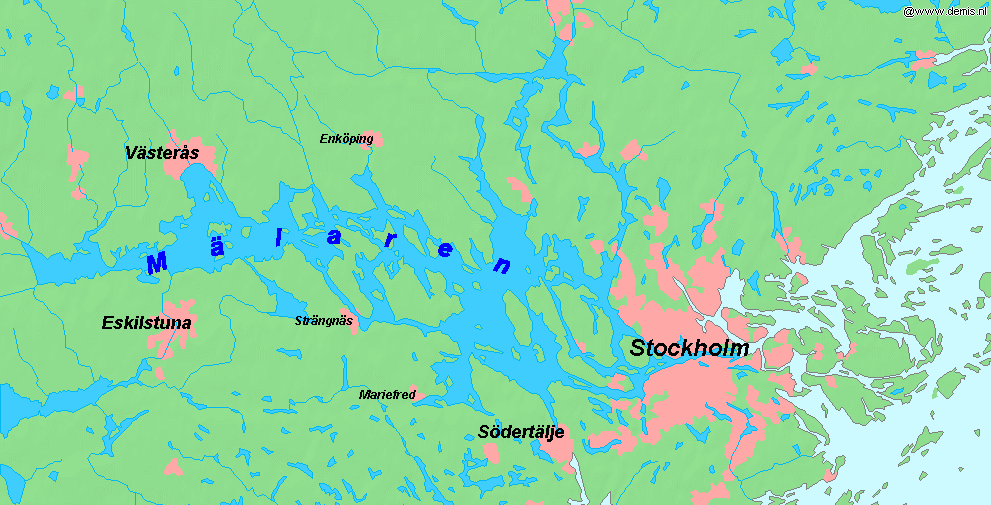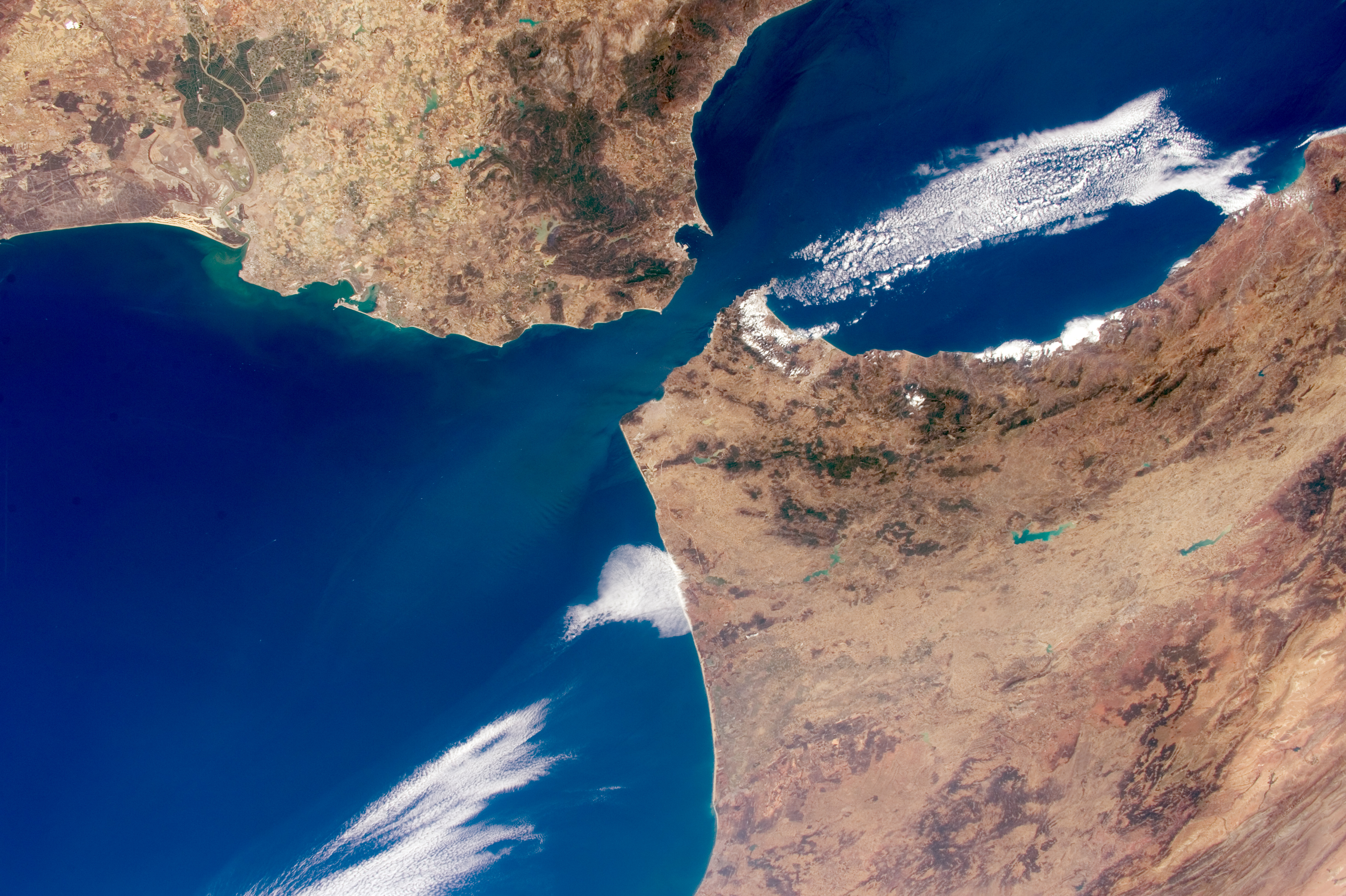|
Almarestäket
Almarestäket, or ''Stäket'', is a strait at the inlet of Lake Mälaren in central-eastern Sweden. A fortress existed there between about 1370 and 1517. A place mentioned as Stocksund by Old Norse author Snorre Sturlasson was once believed to be located here, but is now believed to have been located in Norrström, to the west. The strait was of importance before Stockholm was founded in the 14th century, as it guarded the waterway to the significant Swedish medieval cities Uppsala and Sigtuna. For instance, an attack on Sigtuna by Baltic Vikings in 1187 led to a battle at Almarestäket, resulting in the death of Archbishop Johannes. Fortress There was a fortress built here in the mid-late 14th century, under the reign of Albert of Sweden. It was located on the small island ''Stäkesön'' in the middle of the strait. It became the residence of the Swedish Archbishop until 1517, when the Archbishop Gustav Trolle locked himself in there to avoid trial, and the Swedish gove ... [...More Info...] [...Related Items...] OR: [Wikipedia] [Google] [Baidu] |
Almarestäket's Castle
Almarestäket's castle (or Sankt Erik's castle) is a medieval castle ruin in Upplands-Bro Municipality, Upplands-Bro municipality in Stockholm County. The complex is named after Eric IX of Sweden and was once one of Sweden's strongest and most famous castles,Informationstavla på platsen uppsatt av Stockholms läns museum och Upplands bro kommun located at the important choke point of Almarestäket, a strait at the inlet to Mälaren, Lake Mälaren. Almarestäket's castle is listed as an ancient monument by the Swedish National Heritage Board. History A castle was built during the 12th century on Stäketsholmen (which was then an island), and served as a defense facility for the cities of Sigtuna and Uppsala. An important waterway ran here between Stockholm and Uppsala, and whoever had control over the waterways also had control over the kingdom. Throughout the Middle Ages, there was a constant tug-of-war between the king and the church over the rule of the castle. The castle was ... [...More Info...] [...Related Items...] OR: [Wikipedia] [Google] [Baidu] |
Gustav Trolle
Gustav Eriksson Trolle (September 1488 – 1535) was the archbishop of Uppsala in Sweden, in two sessions, during the turbulent Reformation events. He was the son of Eric Arvidsson Trolle, a former regent of Sweden during the era of the Kalmar Union. After returning from studies abroad, in Cologne and Rome, he was in 1513 elected vicar in Linköping. One year later he became Archbishop of Uppsala. In 1515, he got into an argument with the Swedish regent Sten Sture the Younger, who spread the rumour that he was allied with the King Christian II of Denmark. True or not, it resulted in Trolle being removed from his office and put under siege in the archbishop's mansion Almarestäket at lake Mälaren. In the winter of 1517, Almarestäket was demolished by orders from the Swedish government. The Danish threat grew stronger, and Trolle was among those who spoke in favour of the Danish King. In 1520, Christian II of Denmark entered Sweden, and Trolle was rewarded by being reappointed ... [...More Info...] [...Related Items...] OR: [Wikipedia] [Google] [Baidu] |
Stockholm Bloodbath
The Stockholm Bloodbath () was a trial that led to a series of executions in Stockholm between 7 and 9 November 1520. The event is also known as the Stockholm massacre. The events occurred after the coronation of Christian II as the new king of Sweden, when guests in the crowning party were invited to a meeting at Tre Kronor castle. Archbishop Gustav Trolle, demanding economic compensation for things such as the demolition of Almarestäket's fortress, questioned whether the former Swedish regent Sten Sture the Younger and his supporters had been guilty of heresy. Supported by canon law, nearly 100 people were executed in the days following the meeting despite promises of amnesty. Among those killed were many people from the aristocracy who had been supporting the ''Sture Party'' in the previous years. Thereafter King Christian II became known in Sweden as ("Christian heTyrant"). Background Political factions in Sweden The Stockholm Bloodbath was a consequence of conflict b ... [...More Info...] [...Related Items...] OR: [Wikipedia] [Google] [Baidu] |
Johan (archbishop Of Uppsala, Died 1187)
Johannes was the second Archbishop of Uppsala, Sweden, with a short-lived reign between 1185 and 1187. Biography His name is sometimes spelled as 'Johan', the Swedish form of 'Johannes', but since the Swedish language had yet to be established it is of little importance. Little is known about Johannes. Only a few months after the death of the first Archbishop Stefan, Johannes was selected by the Pope to be his successor. He was ordained by the Archbishop of Lund, Absalon—the primate over the newly established Swedish archbishopric—by November 1185. In 1187, a ship from the not yet christianed Estonia entered Mälaren, a lake close to Uppsala, on a plundering expedition. It sailed to Sigtuna, a prosperous city at that time, and plundered it. On its way back, barricades had been set up at Almarestäket, the only exit point and the place where Johannes was currently residing, to prevent the ship from escaping. The ship was however able to get around the barricades through a cree ... [...More Info...] [...Related Items...] OR: [Wikipedia] [Google] [Baidu] |
Mälaren
Mälaren ( , , or ), historically referred to as Lake Malar in English, is the third-largest freshwater lake in Sweden (after Vänern and Vättern). Its area is and its greatest depth is 64 m (210 ft). Mälaren spans from east to west. The lake drains, from south-west to north-east, into the Baltic Sea through its natural outlets Norrström and Söderström (as it flows around Stadsholmen island) and through the artificial Södertälje Canal and Hammarbyleden waterway. The easternmost bay of Mälaren, in central Stockholm, is called Riddarfjärden. The lake is located in Svealand and bounded by the provinces of Uppland, Södermanland and Västmanland. The two largest islands in Mälaren are Selaön () and Svartsjölandet (). Mälaren is low-lying and mostly relatively shallow. Being a quite narrow and shallow lake, Mälaren has bridge crossings between Eskilstuna and Västerås with two crossings on the western end at Kvicksund and three separate bridges between St ... [...More Info...] [...Related Items...] OR: [Wikipedia] [Google] [Baidu] |
Uppland
Uppland is a historical province or ' on the eastern coast of Sweden, just north of Stockholm, the capital. It borders Södermanland, Västmanland and Gästrikland. It is also bounded by lake Mälaren and the Baltic Sea. The name literally means ''up land'', a name which is commonly encountered in especially older English literaturer as ''Upland''. Its Latinised form, which is occasionally used, is ''Uplandia''. Uppland is often called called the province of "castles, ancient remains and runestones" and is famous for having the highest concentration of runestones in the world, with as many as 1,196 inscriptions in stone left by the Vikings. Many of its castles and places of historical interest include Drottningholm Palace, Skokloster Castle, Salsta Castle, the medieval Uppsala Cathedral, where many royals are buried, and Uppsala Castle. Famous people from the region include Ingmar Bergman, St. Bridget of Sweden, Carl Linnaeus, Anders Celsius and Gustav Vasa. It ... [...More Info...] [...Related Items...] OR: [Wikipedia] [Google] [Baidu] |
Straits Of Sweden
A strait is a water body connecting two seas or water basins. The surface water is, for the most part, at the same elevation on both sides and flows through the strait in both directions, even though the topography generally constricts the flow somewhat. In some straits there is a dominant directional current. Most commonly, the strait is a narrowing channel that lies between two land masses. Straits are loci for sediment accumulation, with sand-size deposits usually occurring on the two strait exits, forming subaqueous fans or deltas. Some straits are not navigable because, for example, they are too narrow or too shallow, or because of an unnavigable reef or archipelago. Terminology The terms '' channel'', ''pass'', or ''passage'' can be synonymous and used interchangeably with ''strait'', although each is sometimes differentiated with varying senses. In Scotland, ''firth'' or ''Kyle'' are also sometimes used as synonyms for strait. Many straits are economically importa ... [...More Info...] [...Related Items...] OR: [Wikipedia] [Google] [Baidu] |
Landforms Of Stockholm County
A landform is a land feature on the solid surface of the Earth or other planetary body. They may be natural or may be anthropogenic (caused or influenced by human activity). Landforms together make up a given terrain, and their arrangement in the landscape is known as topography. Landforms include hills, mountains, canyons, and valleys, as well as shoreline features such as bays, peninsulas, and seas, including submerged features such as mid-ocean ridges, volcanoes, and the great oceanic basins. Physical characteristics Landforms are categorized by characteristic physical attributes such as elevation, slope, orientation, structure stratification, rock exposure, and soil type. Gross physical features or landforms include intuitive elements such as berms, cliffs, hills, mounds, peninsulas, ridges, rivers, valleys, volcanoes, and numerous other structural and size-scaled (e.g. ponds vs. lakes, hills vs. mountains) elements including various kinds of inland and oceanic waterbodi ... [...More Info...] [...Related Items...] OR: [Wikipedia] [Google] [Baidu] |
Nordisk Familjebok
(, 'Nordic Family Book') is a Swedish language, Swedish encyclopedia that was published in print from between 1876 and 1993, and that is now fully available in digital form via Project Runeberg at Linköping University. The public domain editions of the encyclopedia remain important reference works in Finland, especially on Finnish Wikipedia. History First edition began when Halmstad publisher hired an editor, linguist , in 1874 to publish a six-volume encyclopedia. Linder drew up a plan for the work, designed the editorial team and created a large circle of experts and literary figures, who submitted article proposals and wrote and reviewed them. Under Linder's direction, the articles were then edited to make them as formal, consistent and accurate as possible. Much attention was paid to Nordic subjects, mainly Swedish and Finnish, where sources and models were often lacking, so extensive and time-consuming pioneering work had to be done. As a result, the earlier plan f ... [...More Info...] [...Related Items...] OR: [Wikipedia] [Google] [Baidu] |
Footnotes
In publishing, a note is a brief text in which the author comments on the subject and themes of the book and names supporting citations. In the editorial production of books and documents, typographically, a note is usually several lines of text at the bottom of the page, at the end of a chapter, at the end of a volume, or a house-style typographic usage throughout the text. Notes are usually identified with superscript numbers or a symbol.''The Oxford Companion to the English Language'' (1992) p. 709. Footnotes are informational notes located at the foot of the thematically relevant page, whilst endnotes are informational notes published at the end of a chapter, the end of a volume, or the conclusion of a multi-volume book. Unlike footnotes, which require manipulating the page design (text-block and page layouts) to accommodate the additional text, endnotes are advantageous to editorial production because the textual inclusion does not alter the design of the publication. H ... [...More Info...] [...Related Items...] OR: [Wikipedia] [Google] [Baidu] |
Västra Stambanan
The Western Main Line () is the main state-owned railway line between Stockholm and Gothenburg in Sweden. Its construction began in 1856 and it opened for service in 1862. . Retrieved 2019-03-02. Maintained by the , the Western Main Line is and consists entirely of |


